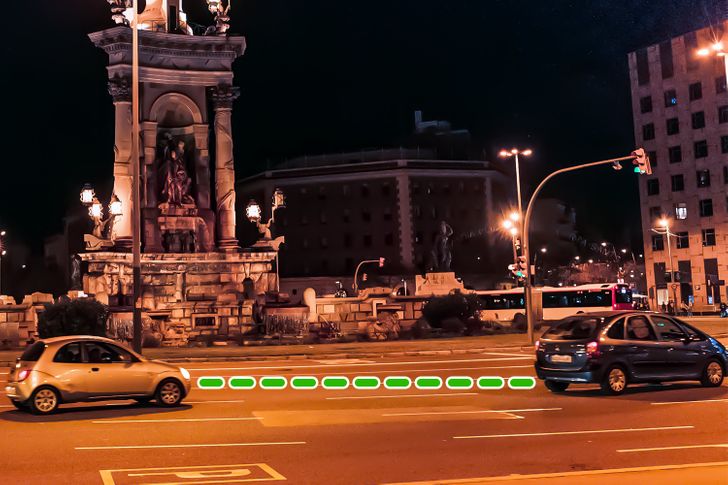About 1 out of every 25 drivers has said that they have fallen asleep at the wheel while driving at night. Not only that, but American drivers have a 1 in 116 chance of colliding with a wild animal. These possible dangers can be avoided if you are extra careful and practice defensive driving. Just because the road is empty late at night doesn’t mean that you can step on the gas and forget about your safety.
Bhaskar Health wants to offer 10 pieces of advice that can be blessings in disguise when you need to drive after sunset.
1. Don’t shift from “drive” to “reverse” in an automatic car before it stops moving.
This might be okay with most cars, but with automatic transmissions, it can prove to be very harmful. And that’s because if you shift to reverse before your car is fully stopped, the transmission itself stops the car instead of the brakes. This can severely damage your brakes and leave you hanging in the middle of the street late at night.
2. Avoid 2-lane highways.
Lower lighting, an increased glare, and sharper curves are the main reasons why these roads are dangerous after sunset. Most of these roads don’t have any lights, so the driver’s eyes get used to the pitch dark. That’s why when a car is approaching from the opposite side, its lights can confuse the driver. So they might miss a road sign or a sharp curve and have an accident that could have been prevented during the day.
3. Dim the lights of your instrument panel.
The most important thing about doing this is minimizing the reflections on your windshields. This way your eyes are focused solely on the road and not on the dashboard lights (which can distract you). These bright LED lights can really confuse your eyes and create reflections that might even cause you to have an accident. That’s why all cars come with a dimmer switch, which can control the brightness of the dashboard lights.
4. Don’t wear glasses with reflective lenses.
It’s not only the windshield that creates unnecessary reflections, but also regular glasses. If you drive at night often, it’s best that you get a prescription for anti-reflective lenses that allow more light to reach your eyes. And you can stay away from the yellow-tinted glasses that many companies advertise. The yellow lenses will only make it harder for you to notice every little detail on the road since they won’t let enough light reach your eyes.
5. Keep your windshield clean by using newspaper.
Newspaper is made of fibers that don’t contain any abrasive materials that can damage your windows. On the contrary, they clean much better than paper towels leaving no traces of lint behind. Also, many newspapers have stopped using petroleum-based ink, so they don’t leave ink stains either. You can dip your newspaper in a mixture of vinegar and water and start cleaning your car windows.
6. Keep your distance and reduce your speed.
Whether you’re on a freeway or a city road, keeping your distance and a reduced speed at night is very important. Your reflexes can be slower to react properly when the lighting outside isn’t as bright as it is during the day. The distance you keep from other cars needs to be enough to allow you to count to 3. If you reach the car in front of you before you finish counting to 3, then maybe you need to reduce your speed a little bit more.
7. Always carry a reflective triangle in your trunk in case of emergencies.
No matter how well care you take of your car, a flat tire or another emergency can always happen when you least expect it. That’s why it’s vital for you to have a reflective triangle, a flashlight, a reflective jacket, and jumper cables. That’s how, even if you find yourself in an unknown area, you will be able to stop on the side of the road safely. Make sure you also have a phone charger with you, so you can call for help if it’s something you can’t fix by yourself.
8. Keep your headlights clean.
Dirty headlights can make driving at night even harder, providing decreased lighting. And if you’re driving on a road without any lights, your car’s headlights are all you have. That’s why you should clean them before leaving your home and make sure you carry cleaning supplies. If they get dirty while driving on a muddy road, you can stop at a gas station and give them a nice scrub.
9. Use GPS for safety.
Your awareness and visibility of the road at night are impaired by the darkness. That’s where a GPS device will come in handy, by providing you with clear instructions even when the weather isn’t at its best. Even when you are well-aware of a road, the weather and the dark lighting might confuse you and make you miss a turn. You need to turn on the voice of your GPS and rely on that instead of staring at the screen the whole time, which will take your eyes off the road.
10. Don’t be afraid to use your high beams.
High beams should come in handy when driving in a rural area or on open roads. When there aren’t that many road lights, they offer better visibility of the road ahead and of any possible animal encounters. However, you shouldn’t have them on when following another car or when a car is approaching from the opposite side. There are certain automatic lighting systems that will adjust your lights whenever other cars are in close vicinity to you.
Have you ever found yourself in trouble while driving at night? What helps you keep your eyes open and not get sleepy while behind the wheel?












0 Comments